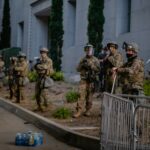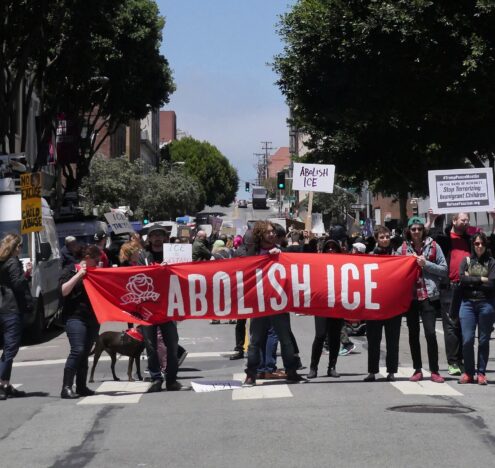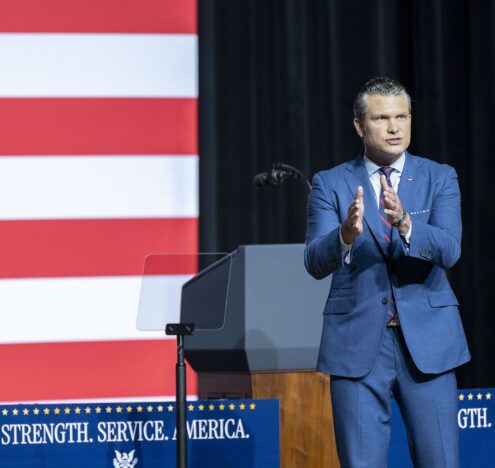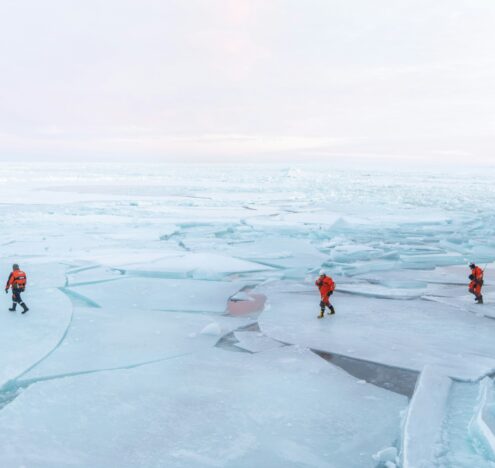In June, a 14-year-old boy was arrested in Colombia for assassinating Senator and presidential hopeful Miguel Uribe Turbay. When he was arrested, he said he did it, “for money, for my family.” He said he worked for a local neighborhood microtrafficking network, a type of organization that recruits minors into drug crimes.
Meanwhile, President Gustavo Petro’s “Total Peace” plan and negotiations with multiple armed groups and drug-trafficking networks have collapsed, fueling a new round of violence. The latest upswell has displaced many rural Colombians, who have fled into neighboring Venezuela, which is already struggling with its own ongoing humanitarian crisis. Worldwide, Colombia continues to have one of the highest rates of internally displaced people, estimated at nearly 7 million.
Children have become the primary victims of internal displacement as violence intensifies in places like Catatumbo, Chocó, and Cauca. Save the Children Colombia estimates that violence forces 470 children from their homes daily.
The surge of violence, child displacement, and disappearance of children from Colombia’s poorest regions are not separate stories; instead, they run on parallel, and sometimes overlapping, tracks. The same forces that shape insecurity also drive the displacements and inequities that feed guerrilla recruitment of minors, drug trafficking crimes committed by children, and international adoption pipelines.
Today’s violence has roots in the 1960s, when the Revolutionary Armed Forces of Colombia (FARC) launched an armed uprising against the state, demanding land reform to challenge Colombia’s entrenched rural inequalities. Although the Colombian governments of the 1960s and 1970s tried to implement those reforms, their attempts often lacked a serious commitment to addressing the peasantry’s grievances. Additionally, drug trafficking networks, which surged in the 1970s and 1980s, generate their own violence in the pursuit of profit and sometimes share blurry boundaries with the FARC and National Liberation Army (ELN).
In 2016, a landmark peace deal between the FARC and the Colombian government successfully reduced violence and provided pathways to land reform and political participation for the FARC. Still, promises from the Colombian government to provide greater investment in rural prosperity have remained largely unrealized. Petro’s “Total Peace” plan, implemented in 2022, built on the progress of the 2016 peace deal and recommitted the state to land reform, but progress remains slow and incremental. The recent historic conviction and twelve-year house arrest sentence of former president Álvaro Uribe — architect of Colombia’s hardline war on the FARC — underscores that the country’s violence is structural and ongoing, without serious resolution.
International treaties were meant to shield children from this cycle of conflict, yet they, too, have failed in practice. Colombia is a signatory to both the UN Convention on the Rights of the Child and the Optional Protocol on the Involvement of Children in Armed Conflict. Both treaties seek to prevent the involvement of children in hostilities. Nonetheless, the state has failed to protect displaced children. It has not taken meaningful steps to prevent groups from recruiting minors, often displaced because of the violence of those same guerrilla groups — creating an ongoing cycle of displacement and violence.
The same pattern often shapes international adoption programs that permanently place children with unrelated families abroad. Colombia is also a signatory to the Hague Convention on Protection of Children and Co-operation in Respect of Intercountry Adoption, the most important international treaty that seeks to prevent the trafficking and sale of children.
Despite noble aims to protect children, these treaties ultimately undermine their own purposes. Children’s rights scholar Michael Freeman argues that international treaties that outline children’s rights suffer from persistent “adultism,” making children into the subjects of these treaties rather than stakeholders with a vested interest in their own well-being. Instead, treaties about children render them into abstract legal concepts subject to the wills of others and as commodities or resources to be protected, prevented from combat, or placed abroad.
Between 2022 and 2024, the UN Human Rights Office in Colombia verified 474 cases of children recruited by armed non-state groups. Many are lured by social media content, including videos on TikTok and Facebook that target teenagers with promises of wealth and success in the form of glitzy parties and a lifestyle of abundance that most could only dream of reaching. And these recruitment tactics appear to work, creating a permanent recruitment pipeline.
At the local level, Colombia’s child welfare agency, the Instituto Colombiano de Bienestar Familiar (ICBF), supported by UNICEF and other partners, has rolled out programs, including anti-trafficking workshops and leadership initiatives to support reintegration and prevent recruitment of minors by drug traffickers. For instance, nearly 958 at-risk migrant children benefited from ICBF’s I Accompany You program, while community leadership campaigns reached thousands of young people. But resources remain stretched. In areas controlled by organized criminal groups, especially those not classified as armed actors, children are often left out of protective systems entirely.
International adoption has also been viewed as an alternative pipeline to offer children displaced by violence a chance at a “better life” and opportunities they might not have otherwise had. Minors displaced from homes and families easily become wards of ICBF and are funneled into international adoption programs rather than reunited with their families. In recent years, Colombia has been one of the top countries for intercountry adoption to the US — 200 children were adopted in 2023, down slightly from 235 in 2022. Older children, typically from five to seventeen years old, and sibling groups continue to populate that pipeline, rather than infants as is often imagined in popular narratives.
State and international efforts to protect children serve as downstream solutions to what are ultimately upstream problems of structural violence and forcible displacement of people and children from their homes and land. Violence without an end in sight displaces families, severs kinship ties, and subjects minors to the wishes of external actors. Absent any meaningful choices and faced with state failure to protect them, children are recruited as soldiers, drug traffickers, or exported abroad, all in the hope of a better life.




















